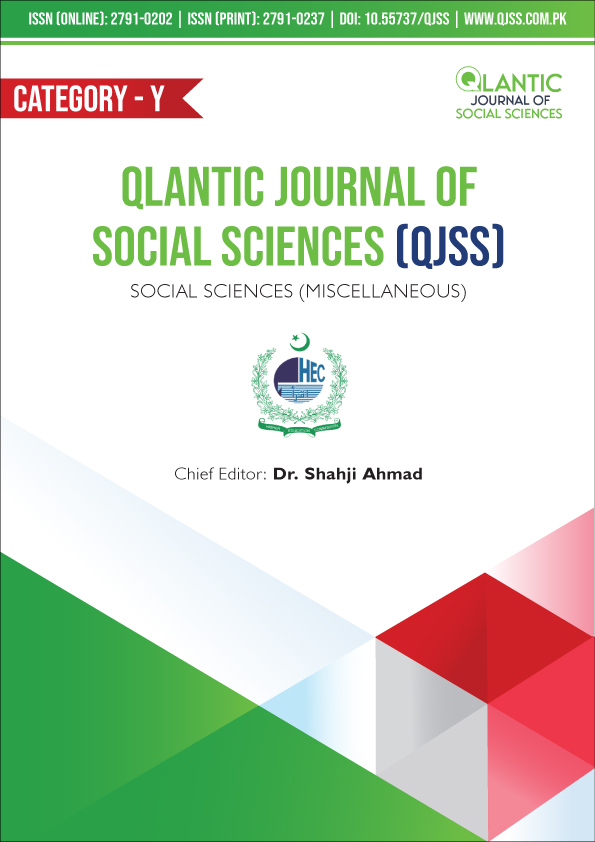Review of The Existing Pre-Service Teacher Training Curriculum on Positive Disciplining
DOI:
https://doi.org/10.55737/qjss.v-iv.24316Keywords:
Positive Disciplining, Pre-Service Teacher Training, Curriculum, ReviewAbstract
One of the keystones of positive teaching and learning in schools is sustaining discipline. Creating and maintaining a safe, disciplined school environment is one of the important challenges faced by principals, educators, and parents in schools (Lekganyane, 2016). The aim of this study was to analyze the enacted and taught curriculum of teacher training programmes to identify dimensions that negatively affect positive disciplining. A mixed method design was adopted, and qualitative data was collected through a content analysis sheet, and quantitative data were collected through a five-point Likert scale questionnaire. The data were collected through a self-developed content analysis sheet and questionnaire for teacher-educators and student-teachers. First of all, the elements/factors for determining the construct 'positive disciplining' were collected through a review of relevant literature. Curriculum documents, course guides, and faculty resources are of pivotal significance in the education system as these formulate the basis structure and direction of the education system. It was recommended that the affected curriculum be improved, mainly to close the gap between the concepts taken from academic knowledge and the developing competencies and abilities. While thoughts are essential, developing them alone is only obliging for tests. It is essential for the student-teachers to put their perceptions into practice.
References
Babbie, E., & Mouton, J. (2010). The Practice of Social Research. 10th Edition, Republic of South Africa, Oxford University Press Southern Africa, Cape Town.
Charles, C. M. (2017). Today’s best classroom management strategies: Paths to positive discipline. Pearson.
Cregor, M. (2008). Teaching tolerance: The building blocks of positive behaviour. Education Digest, 74(4), 31–35. http://copbisuniversal.pbworks.com/w/file/fetch/66372351.pdf
Creswell, J. W. (2009). Research design: Qualitative, quantitative, and mixed methods approaches (3rd ed.). Sage Publications.
Darling-Hammond, L. (2017). Teacher education around the world: What can we learn from international practice?. European journal of teacher education, 40(3), 291-309. https://doi.org/10.1080/02619768.2017.1315399
Gaustad, J. (1991). Schools respond to gangs and violence. Oregon School Study Council (OSSC) Bulletin, 34(9), 1–54.
Goodman, J. F. (2006). School discipline in moral disarray. Journal of Moral Education, 35(2), 213-230. https://doi.org/10.1080/03057240600681736
Government of Pakistan, Ministry of Education. (2009). National education policy 2009. Government of Pakistan. https://www.mofept.gov.pk/
Government of Pakistan, Ministry of Federal Education and Professional Training. (2017). National education policy 2017. Government of Pakistan. https://www.mofept.gov.pk/
Koenig, L. J. (2008). Smart discipline for the classroom: Respect and cooperation restored (4th ed.). Corwin Press.
Lekganyane, S. A. (2011). Managing learner misconduct in Ntoane Village secondary schools (Doctoral dissertation, University of South Africa).
Masitsa, G. (2008). Discipline and disciplinary measures in the Free State township schools: unresolved problems. Acta academica, 40(3), 234-270. https://hdl.handle.net/10520/EJC15418
National Professional Standards for Teachers in Pakistan. (2009). National professional standards for teachers in Pakistan. Government of Pakistan. https://www.mofept.gov.pk/
UNESCO. (2003). Education in a global era: Challenges to equity, opportunities for diversity. UNESCO. https://unesdoc.unesco.org/




